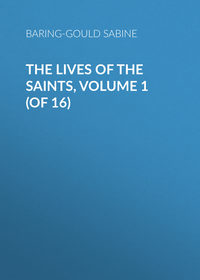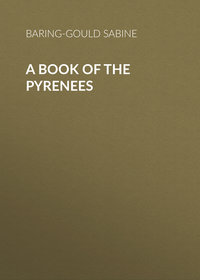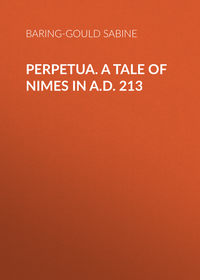 полная версия
полная версияA Book of Cornwall
Here is a melancholy account of the condition to which a holy well has sunk: -
"Venton Eia (S. Ia's well), on the cliff overlooking Porthmeor. – This ancient well, associated with the memory of the patron saint of the town (S. Ives), was formerly held in the highest reverence. Entries occur in the borough records of sums paid for cleansing and repairing it, under 1668-9 and 1692-3. On the last of these occasions the well was covered, faced, and floored with hewn granite blocks in two compartments. It is still known as 'the Wishing Well,' from the old custom of divination by crooked pins dropped into the water. For some years past, however, this ancient source of purity has been shamefully outraged by contact with all that is foul. Close to it is a cluster of sties, known as 'Pig's Town,' and the well has become the receptacle for stinking fish and all kinds of offal. Just above it are the walls of the new cemetery. All veneration for this spot, so dear to countless generations of our forefathers, seems to have departed."3
The well of S. Bridget at Landue remains, but the saint's chapel is gone. Stables near the well are thought to have polluted the water, and the well is closed lest the incautious should drink of the reputedly contaminated waters.
There are a good many holy wells in Devon also, but none of mark. At Sticklepath above the well rises a very early inscribed stone. There is a holy well, ruinous, at Halwell, one, probably of S. Lo, at Broadwood, one at Ermington, from which water is still drawn for baptisms, one at Lifton, one at Ashburton, probably dedicated to S. Wulvela. S. Sidwell and S. Anne each has her well at Exeter, and the water of the latter has of late become of repute, and is in request under the form of beer. It supplies a brewery.
When S. Cadoc returned from the Holy Land he brought with him a bottle of water from the Jordan, and poured it into a well in Cornwall. None that I know of bears his name, but that at Laneast is called Jordan well.
There is a very singular custom still observed in connection with a stream in place of a holy well at Gwennap. There, on Good Friday, children seek two spots by a stream to baptise their dolls. This can be due only to a dim reminiscence of baptising in the open.
In addition to the holy wells, there are the pixy wells, where the ancient spirits have not been dispossessed by the saints.
Poughill parish takes its name from a puck or pisgie well.
Fice's well, near Prince Town, has on it "J. F. 1568." John Fitz, the astrologer, and his lady were once pixy-led whilst riding on Dartmoor. After long wanderings in the vain effort to find their way, they lighted on a pure spring, drank of it; and their eyes were opened to know where they were and which was their right direction. In gratitude for this deliverance, old John Fitz caused the stone memorial to be set over the spring for the advantage of all pixy-led wanderers. Alas! the convict establishment has enclosed the moor all round, and now this well, though intact, no longer stands, as I remember it, in wild moorland, but enclosed by a protecting wall in a field.
In a certain large village of which I know something water was introduced by means of earthenware pipes for a considerable distance, and then conveyed to taps at convenient spots by iron and lead.
Now there was one of these taps placed outside the Board school. The master said within himself, "If I go to the tap, I shall have to pay the water rate, which will be very heavy; if I never turn the tap, I surely cannot be required to pay. So I know what I will do. Go to! I will draw all my water from the well in the yard of the farm at the back of my premises."
He did so, and lost his wife and child by diphtheria. Verily even modern Board school masters might learn something from these wild old pure water-loving Celtic saints.
Note.-Book on Cornish Holy Wells: -
Quiller-Couch (M. and L.), Ancient and Holy Wells of Cornwall. London: Clark, 1894.
CHAPTER III
CORNISH CROSSES
Abundance of crosses-The menhîr-Crosses marked the limits of a Llan-Crosses marked places for public prayer-Instance of a Cornish Dissenter-Churches anciently few and far between-The cross erected where was no church-Which therefore precedes the village church-Crosses as waymarks-The Abbot's Way-Interlaced work-The plait a subject for study.
There is no county in England where crosses abound as they do in Cornwall. Second to it comes Devonshire. Indeed, on Dartmoor and in the west of the latter county they are as numerous as in Cornwall.
Their origin is various.
In the first place, where the pagans worshipped a menhîr or standing stone, there it was Christianised by being turned into a cross. In the second place, crosses marked the bounds of a minihi or llan, the sanctuary of the saint.
Then, again, the Celtic churches were very small, mere oratories, that could not possibly contain a moderate congregation. The saints took their station at a cross, and preached thence. With the Saxons there was a rooted dread of entering an enclosed place for anything like worship, fearing, as they did, the exercise of magical rites; and they were accustomed to hold all their meetings in the open air. S. Walpurga, the sister of S. Willibald, who wrote in 750, and was a Wessex woman, says: -
"It is the custom of the Saxon race that on many estates of nobles and of good men they are wont to have not a church, but the standard of the holy cross dedicated to our Lord and reverenced with great honour, lifted up on high so as to be convenient for the frequency of daily prayer."
In connection with this, I may mention a fact. In the parish of Altarnon was an old pious Wesleyan, and when the weather was too bad for him to go to chapel he was wont to go to one of the crosses of granite that stood near his cottage, kneel there, and say his prayers. He died not long ago.
Bede, some twenty years before Walpurga, says that-
"The religious habit was then held in great veneration, so that wheresoever a clerk or a monk happened to come he was joyfully received, … and if they chanced to meet him upon the way, they ran to him, and bowing, were glad to be signed with his hand and blessed with his mouth. On Sundays they flocked largely to the" (bishop's) "church or the monasteries to hear the word of God. And if any presbyter chanced to come into a village, the inhabitants flocked together to hear the word of life; for the presbyters and clerks went into the villages on no other account than to preach, baptise, visit the sick, and in short to take care of souls" (H.E., iii. 16).
This shows that, in the first place, among the Anglo-Saxons there were no churches except the cathedral and the monastic church, and no parochial clergy. Bede does not actually say that there was a cross set up from which the itinerant clergy preached, and to which the faithful resorted for prayer, but this additional fact we have learned from Walpurga.
So we come to this very interesting conclusion, that the village cross preceded the parish church. The crosses were, in fact, the religious centres of church life, and we ought accordingly to value and preserve them with the tenderest care. A great many of those that we have now on our village greens are comparatively modern, and date from the fourteenth or fifteenth century, but there still remain a vast number, not in the midst of a village, but on moors and by highways of an extremely early description, and which most assuredly have been the scene of many a primitive "camp meeting" in the fifth and sixth centuries.
On Sourton Down beside the road stands a cross of very coarse granite. On it is inscribed PRINCIPI FIL AVDEI, and above it an early and rude cross of Constantine. Some time in the Middle Ages the rudeness of the stone gave dissatisfaction, and its head was trimmed into a cross.
A third occasion for the erection of crosses was as waymarks. Across Dartmoor such a succession of rude crosses exists where was what is called the Abbot's Way from Buckfast to Tavistock and to Plympton. But there are others not on these lines, and such may have served both as guiding marks and also as stations for prayer. That the monks of Buckland-and Buckland goes back to pre-Saxon times-did go out to the moor and there minister to the tin-streamers or squatters and shepherds, I cannot doubt, and accordingly look with much emotion at these grey monuments of early Christianity.
The interlaced work which is found on some of the crosses is of the same character as the ornamentation in the early Irish MSS., and it was adopted from the Celtic clergy by their Anglian and Saxon converts.
But whence came it?
We know that the Britons delighted in plaited work with osiers, and it was with wattle that they built their houses, their kings' palaces, and defended their camps. By constant use of wattle through long ages they became extraordinarily skilful in devising plaits; and when they began to work on stone they copied thereon the delicate interlaced work they loved to exhibit in their domestic buildings.
The various plaits have been worked out by Mr. A. G. Langdon in his admirable study of the Cornish crosses. At a meeting of the British Association he exhibited a hundred drawings of different crosses, etc., illustrative of a paper read by Mr. J. Romilly Allen on "The Early Christian Monuments of Cornwall." When some incredulity was expressed as to there being so many examples in that county, Mr. Langdon explained that not only did all these come from Cornwall, but that the examples brought before the Association represented only about one-third of the whole number known to exist. And since that date a good many more have been noticed. The variety in design of the crosses is very great indeed. Some affect the Greek cross, some the Latin; some are with a figure on them, some plain, others richly ornamented. But what is remarkable about them is, in the first place, they are nearly all in granite, a material in which nothing was done from the seventh century down to the fifteenth, as though the capability of working such a hard intractable stone had been lost. And, in the second place, the ornamentation is in the lost art of plaiting, of the beauty and difficulty of which we can hardly conceive till we attempt it. There is first the four-string plait, then that with six, and lastly that with eight. Then three strings are combined together in each plait, then split, forming the so-called Stafford knot; the knot and the plait are worked together; now a loop is dropped, forming a bold and pleasing interruption in the pattern. Then a ring is introduced and plaited into the pattern; then chain-work is introduced; in fact, an endless variety is formed, exercising the ingenuity of the artist to the uttermost. It would be an excellent amusement and occupation for a rainy day in an hotel for the tourist to set to work upon and unravel the mysteries of these Celtic knots.
The old interlaced work, or the tradition of it, seems to have lingered on in the glazing of windows, and some very beautiful examples remain in England and in France. Mr. Romilly Allen points out: -
"In Egyptian, Greek, and Roman decorative art the only kind of interlaced work is the plait, without any modification whatever; and the man who discovered how to devise new patterns from a simple plait, by making what I term breaks, laid the foundation of all the wonderfully complicated and truly bewildering forms of interlaced ornament found on such a masterpiece of the art of illumination as the Book of Kells. Although we do not know who made the discovery of how to make breaks in a plait, we know pretty nearly when it was made."4
He goes on to show that the transition from plaitwork to knotwork took place in Italy between 563 and 774. But is that not a proof of introduction into Italy, and not of its discovery there? I am rather disposed to think that partly through the adoption of the osier wattle in domestic architecture, partly through the employment of the tartan, the plait in all its intricacy was a much earlier product of the genius of the Celtic race.
There is a pretty story in the life of an early Irish saint. He had been put at school, but could not learn. At last, sick of books, he ran away. He found a man at work with willow rods, weaving them to form the walls of a house he was building. He dipped them in water, and laced them in and out with wonderful neatness, patience, and dexterity. And the boy, looking on, marvelled at it all, took it to heart, and said to himself, "These osiers flip out; but when there are patience and skill combined, they can be made into the most exquisite patterns, and plaited together into a most solid screen. Why may not I be thus shaped, if I allow myself to be bent, and am docile in my master's hands?" So he went back to school.
CHAPTER IV
CORNISH CASTLES
The ancient camps-Their kinds-1. Rectangular, Roman-2. The Saxon burh-3. The Celtic circular or oval camp-The lis and the dun-4. Stone fortresses-Heroic legends in Ireland-The Firbolgs-5. The stone castle with mortar, Norman-No good examples.
Anyone with a very little experience can at once "spot" a camp or castle by the appearance from a distance of a hill or headland; and the traveller in Devon and Cornwall will pass scores of them, as he will see by his Ordnance Survey Map, without giving much attention to them, without supposing that they can be of great interest, unless his attention has been previously directed to the subject. It is a pity that anyone should go through a country which may really be said to make ancient camps and castles its speciality and not know something about them.
Of hill castles or camps there are several kinds: -
1. Those that are rectangular or approximately so, and which have been attributed to the Romans. Of these in Cornwall there are but few. Tregear, near Bodmin, and Bossens, in S. Erth, have yielded Roman coins and relics of pottery; but whether actually Roman or Romano-British remains undecided.
2. There are those which consist of a tump or mound, sometimes wholly artificial, usually natural, and adapted by art, and in connection with this is a bass-court, usually, but not universally, quadrilateral. This was the Saxon type of burh; it was also that of the Merovingian. The classic passage descriptive of these is in the Life of S. John of Terouanne, written in the eleventh century: -
"It was customary for the rich men and nobles of these parts, because their main occupation is the carrying on of feuds, to heap up a mound of earth as high as they are able to raise it, and to dig round it a broad, open, and deep ditch, and to girdle the whole upper edge of the bank with a barrier of wooden planks, stoutly fastened together, and set round with numerous turrets, and this in place of a wall.
"Within was constructed a house, or rather a citadel, commanding the whole area, so that the gate of it could alone be reached by means of a bridge that sprang from the counterside of the ditch, and was gradually raised as it advanced, supported by sets of piers, two, or even three, trussed on each side, over convenient spans, crossing the moat with a managed ascent, so as to attain the upper level of the mound, landing on its edge level with the threshold of the door."
A very good idea of such a camp may be derived from the representation of the fortifications of Dinan on the Bayeux tapestry.
In France the mottes on which the wooden dongeons of the Merovingian chiefs were planted certainly abound; but in many cases the bank enclosing the bass-court has disappeared. Good examples may be seen at Plympton, at Lydford, and at Launceston. At the former and latter Norman walls took the place of the palisading; but at Lydford a keep was erected on the tump, but the line of earthworks was never walled.
In Ireland and in Scotland such camps abound; they are there due to Saxon and Danish invaders. In Ireland they are called motes, in England burhs. They afforded the type on which the Normans constructed their castles.
3. A much more common form of camp in Devon and Cornwall is one that is circular or oval, and consists of concentric rings of earth, or earth and stone mixed, with ditches between.
There is, however, a variant where a headland is fortified, either one standing above the sea into which it juts, or at the junction of two streams. There it sufficed to run defensive banks and ditches across the neck of the promontory.
This description of camp or castle is usually supposed to be Celtic.
In Ireland such a camp is a rath. The same word is employed for similar camps in a portion of Pembrokeshire.
Every noble had a right to have a rath, and every chief had his lis or dun.
A lis was an enclosed space, with an earth-mound surrounding it, and was the place in which justice was administered. Lis enters into many place-names in Cornwall, as Liskeard, Lesnewth, Listewdrig, the court of that king who killed S. Gwynear and bullied S. Ewny and the other Irish settlers; Lescaddock, Lescawn, Lestormel, now corrupted into Restormel.
In Ireland les had a wider meaning. S. Carthagh was throwing up a mound around a plot of land where he was going to plant a monastery.
"What are you about there?" asked an inquisitive woman.
"Only engaged in the construction of a little lis," was the reply.
"Lis beg!" (small lis), exclaimed the woman. "I call it a lis mor" (a big lis). And Lismore is its name to this day.
In Ireland every king had his dun. This was an enlarged rath with an outer court in which he held his hostages, for the law required this: "He is no king who has not hostages in lock-up."
Dun in Welsh is din, and dinas is but another form of the same word, and signifies a royal residence.
A gloss to an old Irish law tract says that a royal dun must have two walls and a moat for water.
Dun in Scotland is applied to any fort. According to the Gaelic dictionaries, it is "a heap or mound," and even a dung-hill is a dun.
In fact, the French dune and the Cornish towan derive from the same root. Dun so much resembles the Anglo-Saxon tun that we cannot always be sure of the derivation of a place-name that ends in tun.
Every tribe had its dun, to which the cattle were driven, and where the women and children were placed in security in times of danger. This would be in addition to the royal residence, that is the dun of the rig.
Within the dun were numerous structures of timber, roofed with oak shingles, some of a large description, such as a banqueting hall; but the habitations of the garrison were circular, of wicker-work, and thatched with rushes.
In Cornwall there is Dingerrein, the dinas of S. Geraint; Castel-an-Dinas; Damelioc (Din-Maeloc); Dunheved, the old name for Launceston; Dundagel.
4. I come now to the stone fortresses that are found in parts of Cornwall and Wales. They are also to be seen in Scotland and Ireland. These are called caerau in Wales. A cathair is the term applied to them in Ireland, and cathair signifies as well a city.
They are found in England only in Somersetshire, Devon, and Cornwall; and in Wales only in such parts as were invaded and occupied from Ireland.
In Kerry and the isles of Arran are those in best preservation, and from these we can see that the walls were regularly built up with double faces, rubble being between them. Very usually in Arran stones are placed with the end outwards, so that they serve as ties to hold the walls together.
The Welsh examples are very perfect, and precisely similar to those in Ireland.
We know that the Gauls built stone camps-Cæsar calls them their oppida-but they employed beams of timber along with the stone to tie the walls together. The wood has everywhere rotted away, and the enclosing walls of the Gaulish camps now present the same appearance precisely as do the similar stone camps in Devon, Somerset, and Cornwall. When the timber decayed the stones fell into heaps. In Arran and Anglesey there was no timber; consequently stones were employed as ties, and there the walls remain comparatively intact.
Within the caer were circular stone beehive huts; also chambers that were circular were contrived in the thickness of the walls. These "sentry boxes" have been noticed in Wales, and also in Cornwall and Devon.
The account of Castel-an-Dinas, before it was robbed for the erection of a tower, is precisely such as might be given of one of those in Ireland or Wales: -
"It consisted of two stone walls, one within the other, in a circular form, surrounding the area of the hill. The ruins are now fallen on each side of the walls, and show the work to have been of great height and thickness. There was also a third or outer wall built more than half-way round. Within these walls are many little enclosures of a circular form, about seven yards in diameter, with little walls round them of two or three feet high; they appear to have been so many huts for the shelter of the garrison."
In fact, this was a royal dinas. Not only had it the requisite double wall, but also the drecht gialnai, or dyke of the hostages. Every king retained about him pledges from the under-chiefs that they would be faithful.
There are several of these stone camps in Devon and Cornwall. In Somersetshire Whorlebury is very interesting; in Devon are Whit Tor and Cranbrook; in Cornwall the Cheesewring camp, Carn Brea, Chun Castle, the camp of Caer Conan on Tregonning Hill, Helborough, beside Castel-an-Dinas in Ludgvan.
The heroic legends of Ireland attribute these stone camps to the Firbolgs, the non-Aryan dusky race that was in possession previous to the arrival of the Celts. But that the Milesians learned from them the art of constructing such castles is very certain, for in Christian times the monks imitated them in some of their settlements.
Lord Dunraven, who has photographed these stone duns, says: -
"The legends of the early builders are preserved in the compilations of Irish scribes and bardic writers dating from the twelfth to the fifteenth centuries. The story, which is said by these writers to have been handed down orally during the earliest centuries of the Christian era, and committed to writing when that art first became known in Ireland, is the history of the wanderings and final destruction of a hunted and persecuted race, whose fate would seem to have been mournful and strange as the ruined fortresses of the lost tribe which now stand before us. Coming to Ireland through Britain, they seem to have been long beaten hither and thither, till, flying still westward, they were protected by Ailill and Maeve, who are said to have reigned in Connaught about the first century of the Christian era. From these monarchs they obtained a grant of lands along the western coast of Galway, as well as the islands of Arran, where they remained till their final expulsion. Thus their forms seem to pass across the deep abyss of time, like the white flakes of foam that are seen drifted by the hurrying wind over the wild and wasted ruins of their fortresses."
Excavations show that these stone caers are more ancient than the Christian era; they belong to the period of flint weapons and the introduction of bronze. But, as already stated, the conquerors of the rude stone monument builders adopted some of their arts, and some of their camps are much later.
5. The stone castle, the walls set in mortar, is not earlier in Devon and Cornwall than the Norman Conquest. There are no really stately castles in either county, with the exception of Launceston. Rougemont, Exeter, is eminently unpicturesque; Tiverton, Totnes, Plympton, are almost complete ruins; Lydford-well, as Browne the poet wrote of it in the reign of James I.: -
"They have a castle on a hill;I took it for an old windmill,The vanes blown off by weather;To lie therein one night, 'tis guessed'Twere better to be stoned or pressedOr hanged ere you come hither."And ruin that has fallen on it has not improved its appearance.
Okehampton is but a mean relic; Restormel is circular; Trematon is like a pork-pie; Pendennis, S. Mawes, late and insignificant. Tintagel owes everything to its superb situation and to the legend that it was the place where King Arthur was born. The most picturesque of all is Pengersick, near Breage, but that is late. Its story shall be told in the chapter on Penzance.









